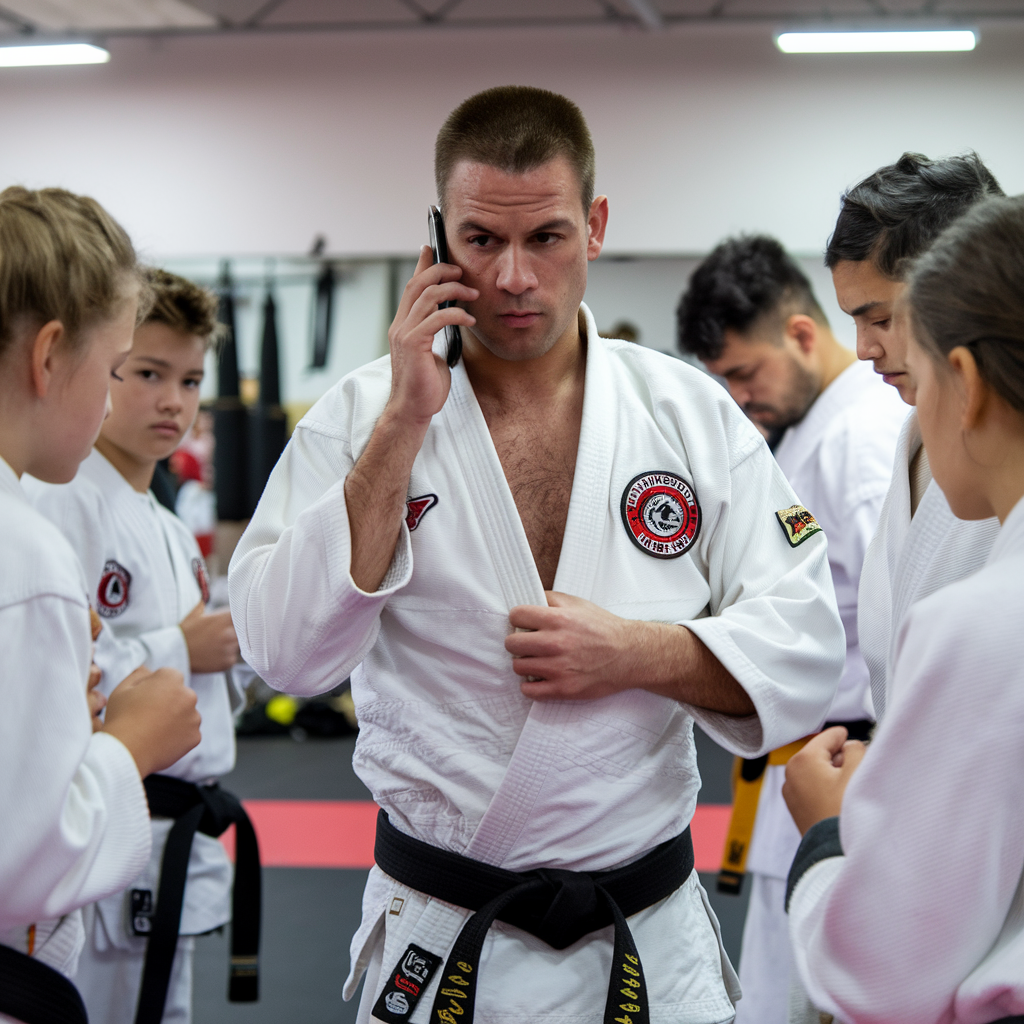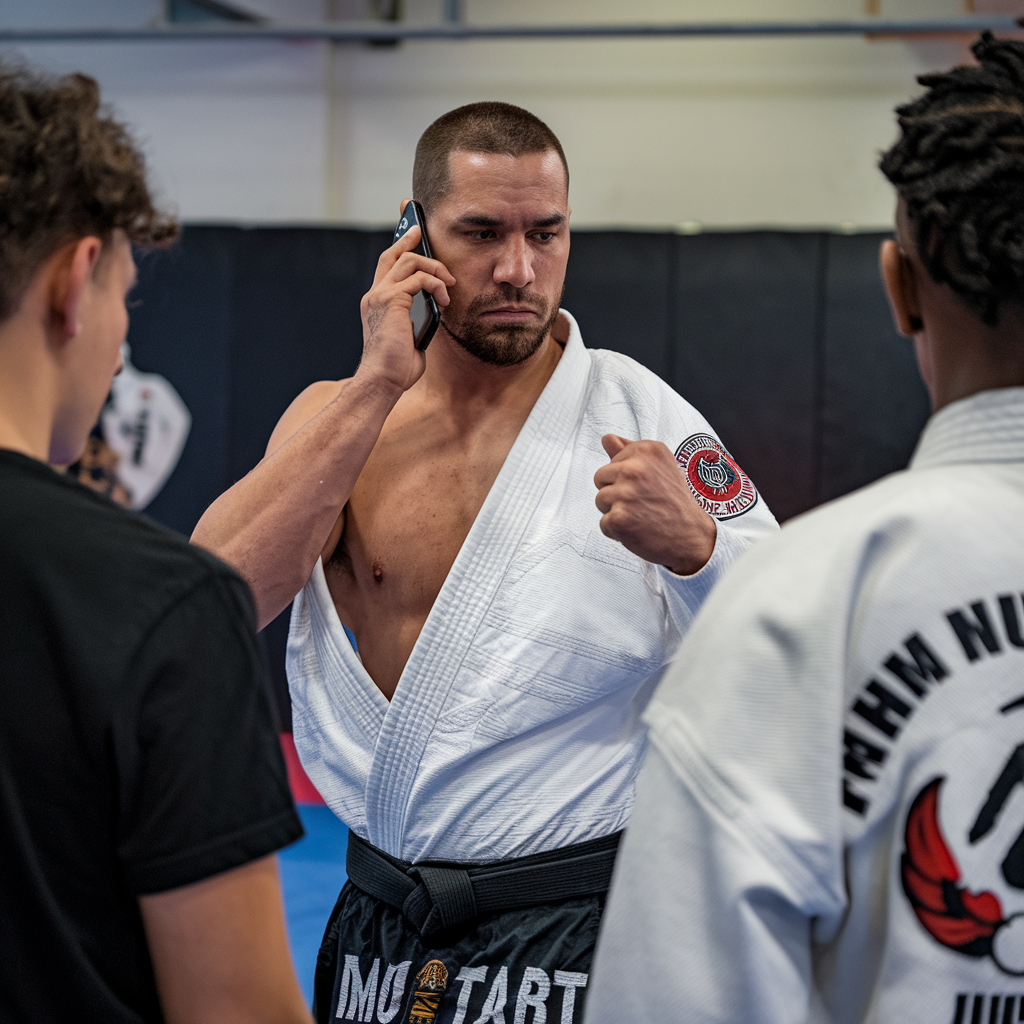
Introduction
In the world of martial arts, adaptability is everything. While mastering a single discipline can make you formidable, blending complementary styles transforms you into a well-rounded and strategic fighter. Muay Thai and Brazilian Jiu-Jitsu (BJJ) are two of the most effective martial arts, excelling in distinct phases of combat—Muay Thai dominates in the stand-up game with powerful strikes, while Jiu-Jitsu controls the ground with submissions and positional tactics.
Fighters who can integrate these two arts are equipped to handle a wide range of situations, whether in competition, self-defense, or general fitness. This article explores how combining Muay Thai’s striking efficiency with Jiu-Jitsu’s tactical prowess can elevate your fight game and provide a smarter, more strategic approach to combat.
The Power of Muay Thai: Precision and Aggression
Muay Thai, also known as the “Art of Eight Limbs,” originates from Thailand and is one of the most aggressive and effective striking systems. Fighters use eight points of contact—fists, elbows, knees, and shins—to deliver devastating blows.
Core Elements of Muay Thai
- Strikes: Powerful punches, kicks, elbows, and knee strikes form the backbone of Muay Thai offense.
- Clinch Fighting: Close-range control using the clinch allows fighters to deliver knees and disrupt an opponent’s balance.
- Footwork and Angles: While aggressive, Muay Thai also emphasizes movement to create angles for attack and defense.
- Conditioning: Fighters undergo rigorous physical training, including bag work, pad drills, and sparring to build endurance and toughness.
Why Muay Thai Is Effective in Combat
- Raw Power: Muay Thai strikes, especially the roundhouse kick and elbow, generate tremendous force.
- Versatility: The combination of punches, kicks, and clinch work covers all aspects of stand-up fighting.
- Toughness: Training focuses on mental and physical conditioning, preparing fighters for real-world scenarios.
The Tactical Genius of Brazilian Jiu-Jitsu
Brazilian Jiu-Jitsu (BJJ) is a grappling-based martial art that emphasizes leverage and technique over brute strength. Developed in Brazil from Japanese Jiu-Jitsu and Judo, BJJ specializes in ground control, submissions, and positional dominance.
Core Elements of Jiu-Jitsu
- Takedowns and Guard Pulls: Methods for initiating the ground game by bringing an opponent down safely.
- Positional Control: Mastery of dominant positions like mount, side control, and back control.
- Submissions: Techniques to force an opponent to surrender through joint locks and chokes.
- Defense and Escapes: Strategies to survive and recover from inferior positions.
Why Jiu-Jitsu Is Effective in Combat
- Leverage Over Strength: Smaller fighters can defeat larger opponents through superior technique.
- Control and Patience: BJJ emphasizes positional dominance and methodical attacks.
- Ground Survival: Knowing how to escape and counter while on the ground is vital in real fights.
Why Muay Thai and Jiu-Jitsu Work So Well Together

While Muay Thai and Jiu-Jitsu may seem like polar opposites—one focusing on striking and the other on grappling—they complement each other perfectly. Together, they cover the full spectrum of combat, from standing exchanges to ground encounters.
1. Addressing the Gaps
- Muay Thai’s Weakness: If a Muay Thai fighter is taken to the ground without grappling knowledge, they are vulnerable.
- Jiu-Jitsu’s Weakness: A Jiu-Jitsu practitioner without striking skills is defenseless in the standing phase.
Combining the two ensures you’re never out of your depth in a fight.
2. Seamless Transitions
- From Striking to Grappling: Use Muay Thai strikes to set up takedowns or clinch entries.
- From Grappling to Striking: Use Jiu-Jitsu sweeps or escapes to return to your feet and strike.
Smart Fighting: Strategies for Combining Muay Thai and Jiu-Jitsu
To maximize the effectiveness of these two arts, it’s essential to train with an integrated mindset. Here are practical strategies for blending Muay Thai and Jiu-Jitsu effectively:
1. Use Muay Thai to Set Up Takedowns
Muay Thai’s clinch provides an excellent gateway to transition into Jiu-Jitsu. Use knees or elbows to force your opponent to defend, opening opportunities for takedowns.
Key Tactics:
- Utilize the body lock from the clinch to execute a trip.
- Use low kicks to weaken your opponent’s stance and set up a double-leg takedown.
2. Strike to Open Submission Opportunities
Once on the ground, use ground-and-pound techniques to force your opponent into defensive mistakes, creating openings for submissions.
Key Tactics:
- From top control, use short elbow strikes to disrupt your opponent’s guard.
- Combine punches from mount to force your opponent to expose their back for a choke.
3. Defend Strikes with Jiu-Jitsu Tactics
If faced with a skilled striker, use Jiu-Jitsu’s defensive capabilities to neutralize their offense and bring the fight to the ground.
Key Tactics:
- Use a double-leg takedown to counter aggressive Muay Thai combinations.
- Employ the guard position to avoid damage and set up submissions.
4. Flow Between Styles
Train for seamless transitions between striking and grappling. Integrate Muay Thai and Jiu-Jitsu drills to simulate real-fight scenarios where these skills blend naturally.
Training Method:
- Practice striking-to-takedown sequences with a partner.
- Engage in MMA sparring, alternating between stand-up and ground phases.
Training Smart: Developing a Hybrid Skillset
- Cross-Train Consistently: Dedicate time to both Muay Thai and Jiu-Jitsu rather than focusing on just one discipline.
- Drill Transitions: Focus on bridging the gap between standing and ground positions.
- Condition Your Body: Both arts require stamina, so prioritize cardiovascular and strength training.
- Spar with Purpose: Combine light Muay Thai sparring with positional Jiu-Jitsu sparring.
Real-World Applications: Self-Defense and Competition
In self-defense situations, knowing both arts provides superior adaptability:
- If standing, Muay Thai enables you to defend and strike effectively.
- If taken down, Jiu-Jitsu provides the means to control, escape, or submit.
In MMA competition, fighters like Anderson Silva, Charles Oliveira, and Valentina Shevchenko have demonstrated how seamlessly Muay Thai and Jiu-Jitsu complement each other—delivering knockouts and submissions with equal proficiency.
Conclusion
Fighting smart isn’t just about being aggressive—it’s about being adaptable. By combining the striking ferocity of Muay Thai with the tactical brilliance of Jiu-Jitsu, you become a versatile fighter who can handle any situation.
Whether you’re preparing for competition, learning self-defense, or simply training for personal growth, integrating these two martial arts gives you the ultimate advantage. Embrace the blend of Muay Thai’s power and Jiu-Jitsu’s tactics, and you’ll fight smarter, stronger, and more effectively in any arena.

